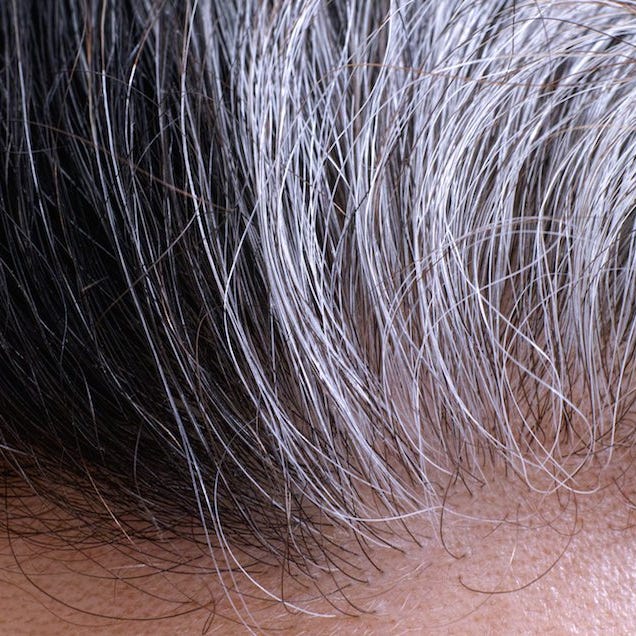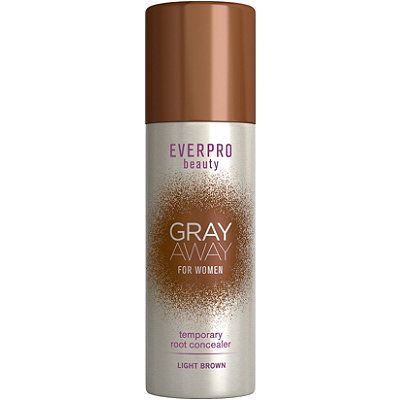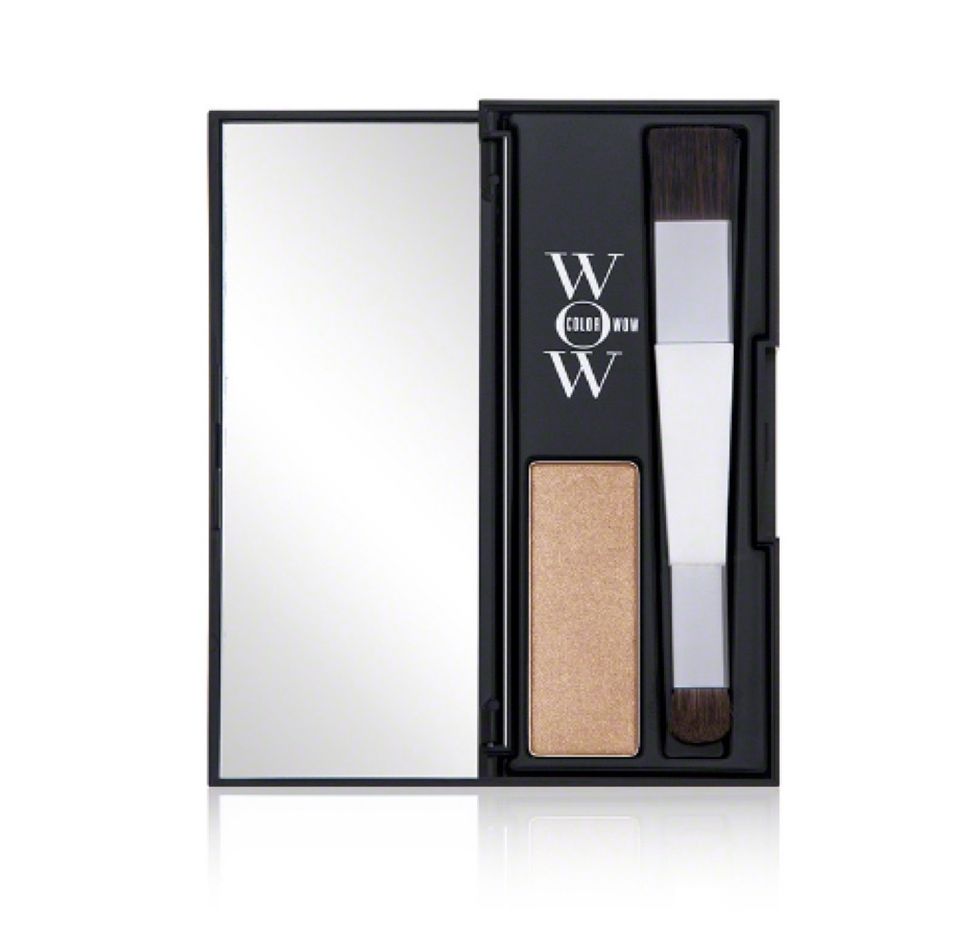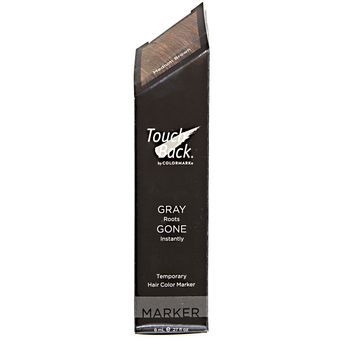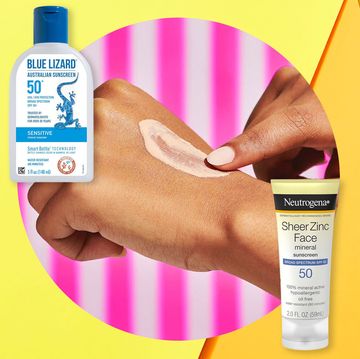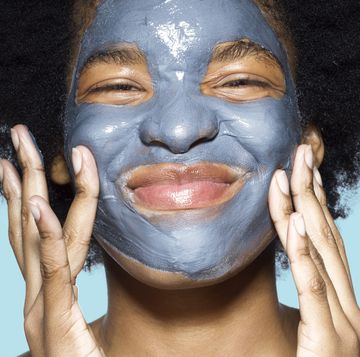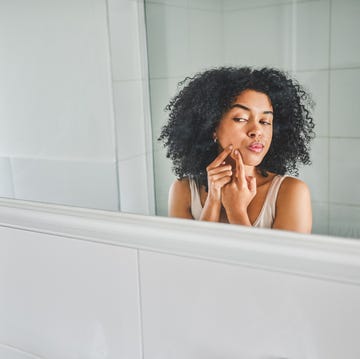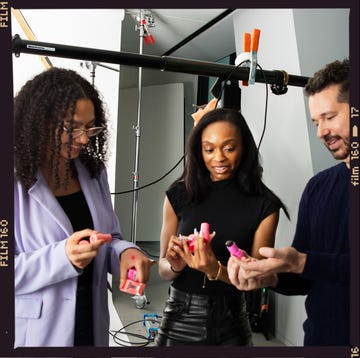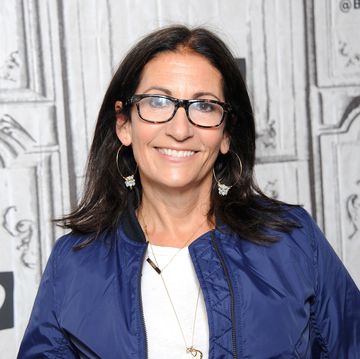Grays are the worst party guests ever. They arrive without an invite, and they're beyond high-maintenance. Consider this: Hair typically grows a half-inch a month, but because grays' growth cells are twice as active, they sprout faster, according to a study published in The British Journal of Dermatology. This explains why keeping those suckers covered means dyeing them every four weeks—which can add up to more than $1,000 a year at the salon. And, ugh, there's evidence we're graying earlier. Per a John Frieda survey, about 32 percent of women discovered their first sprigs before age 30; 20 years ago, that number was only 18 percent. The good news is that there are products and tips that can make covering up your roots easy (and less expensive!). Here's how to DIY it:
Temporary Root Concealer
Try zigzagging your part or adding volume or curls, which distract from stray grays, advises New York City stylist and colorist Greg Ruggeri. Another excellent camouflager: bangs. Women tend to have more gray around their hairlines, notes Ruggeri, and bangs can puff up a bit from your scalp, inadvertently concealing grays. Or opt for one of these touch-up innovations—light years beyond the eye-shadow hacks of yesteryear.
Best for Red, Brunette, and Black Hair: Sprays
Aerosols (Ruggeri's fave: Gray Away Temporary Root Concealer, $10, amazon.com) carry the highest pigment load, blending into the darkest strands. Tip: Submerge the nozzle in warm water for 10 minutes weekly to prevent sputtering.
RELATED: Will You Go Gray? Fact vs. Fiction About Your Future Head of Hair
Best for Blondes: Powders
"Sprays and markers have too much pigment, which makes fair hair look flat," says Ruggeri. Powders (like ColorWow Root Cover-Up, $35, ulta.com) give a finer dusting. Lock them in with a mist of hair spray.
Best for Color Chameleons: Markers
These formulas (we love TouchBack Marker, $24, beauty.com) adhere most evenly to overprocessed strands.
Permanent Hair Dye
It (almost) goes without saying, but follow the instructions to the letter. "Every formula needs a different processing time," says New York City colorist Eva Scrivo. While many hair pros believe it's a myth that grays are coarser, they are more resistant to dye. If the given processing time isn't working, Scrivo says to stick with the same formula, but add on five minutes to each application until you nail the perfect number. More expert tricks:
Start with clean, dry hair. You will not get the best results working with dirty roots. Because gray hairs already dislike pigment molecules, buildup makes it worse.
RELATED: Here's When At-Home Hair Dye Is a Good Option—and When It Isn’t
Sit comfortably. Temperature alters processing time, so don't let color "cook" somewhere hot or cool. Aim for a typical room temperature of 68°F to 72°F.
Wait to wash. Hold off on shampooing for 48 to 72 hours so hair cuticles can fully close and hold in pigment, says Scrivo. Once you do hit the shower, keep water tepid so heat doesn't reopen them. Stick to your touch-up schedule. Heat is what makes hair dye process, and the body heat from your scalp is strongest in the three-quarter-inch area closest to your roots. If your roots have grown out past that point, the color nearest your scalp will process at a quicker rate than the rest, and you could end up with a ring around your crown.
Ready to embrace the gray? For tips on how to care for gray hair, pick up the September issue of Women's Health, on newsstands now.
